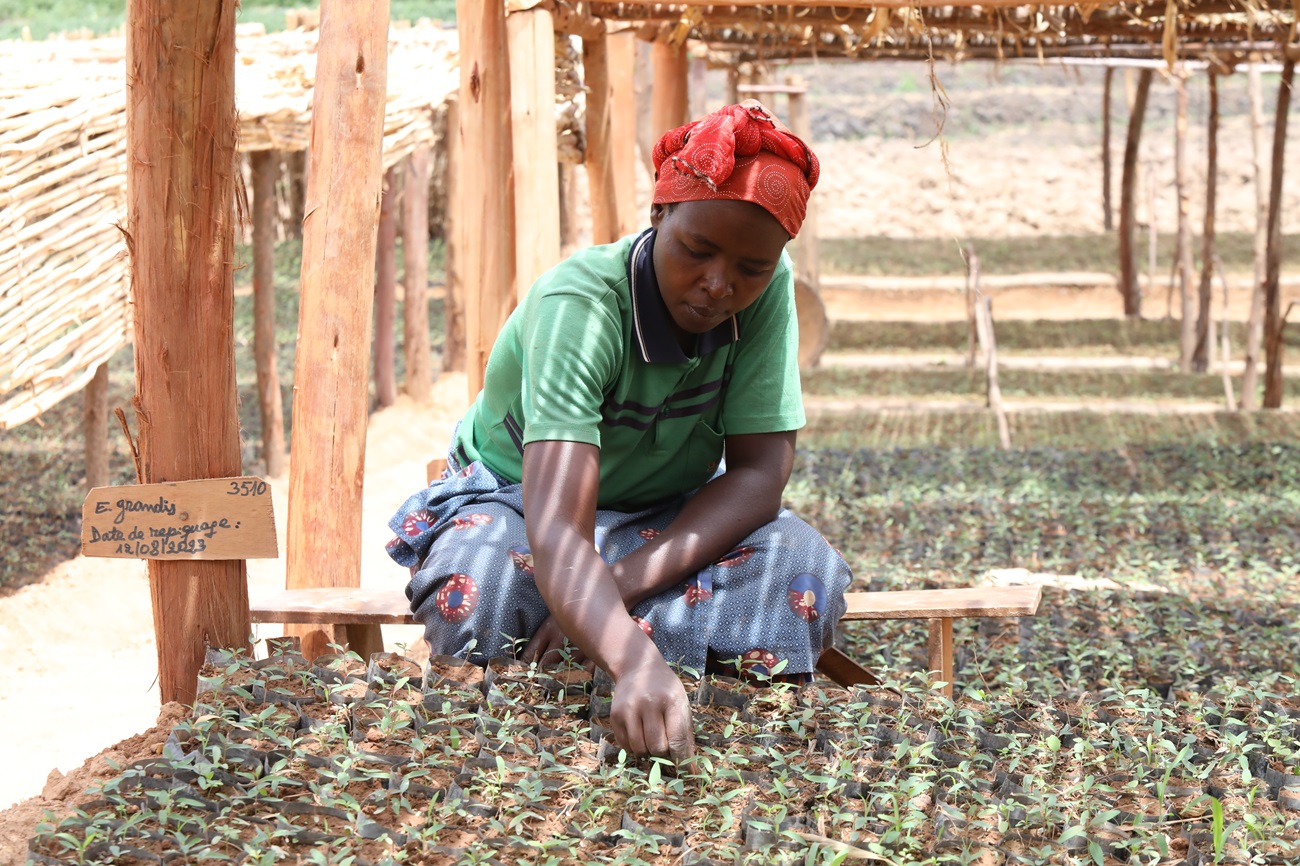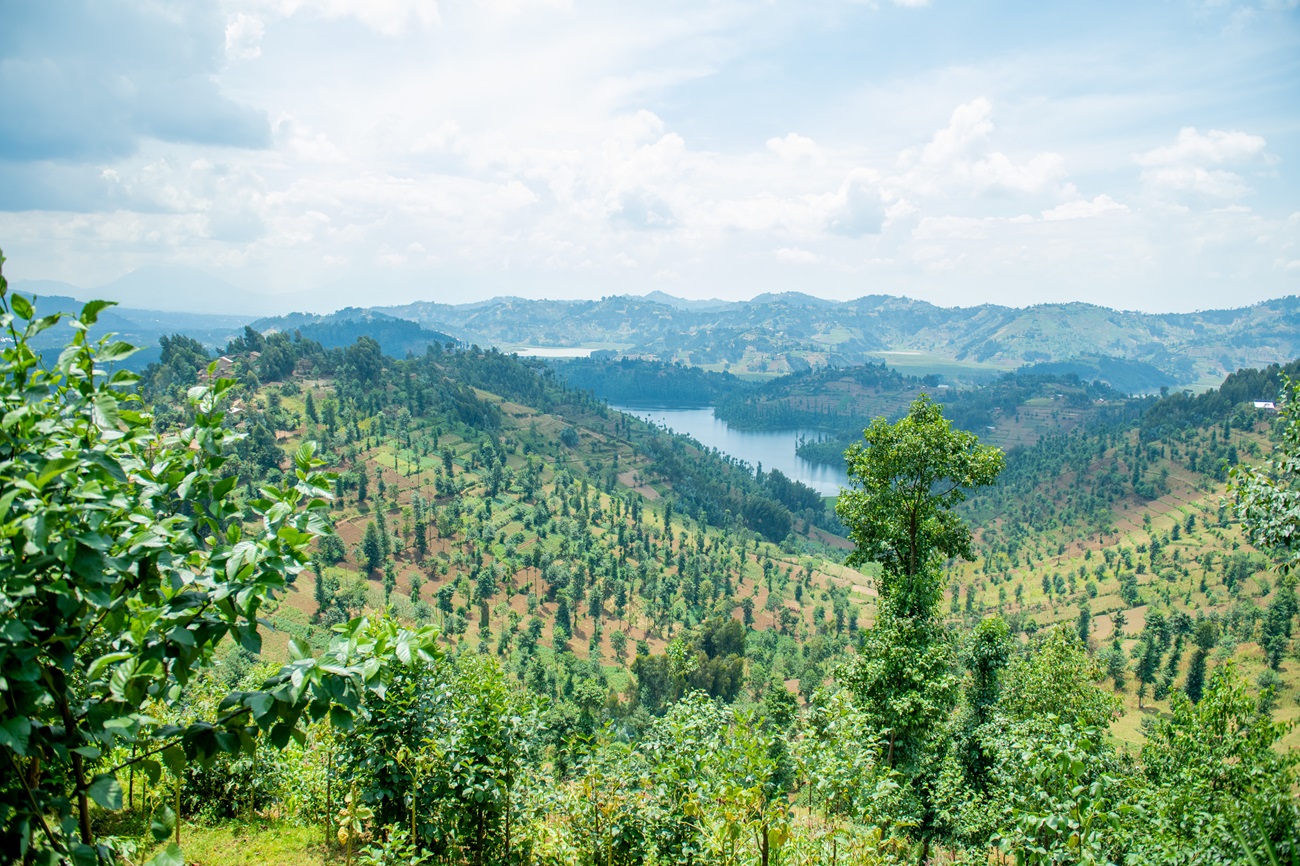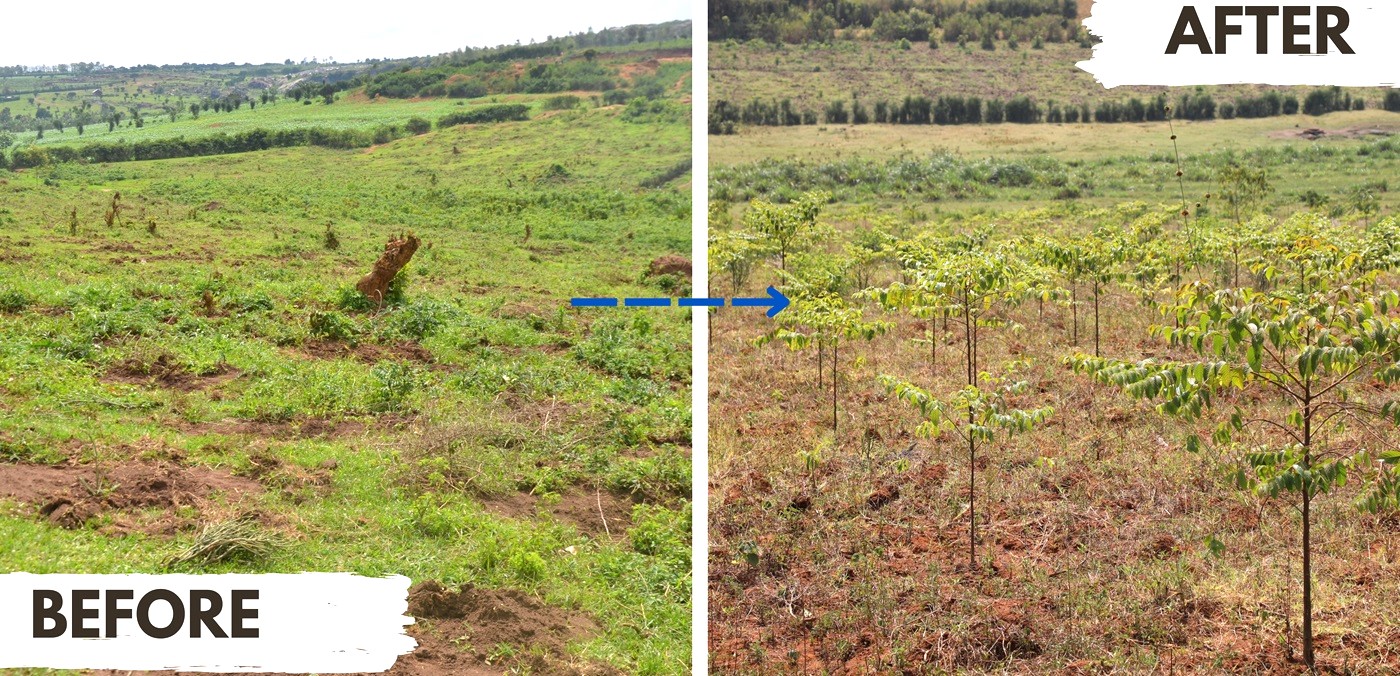Brief note about Transforming Eastern Province through Adaptation (TREPA) project
Rwanda is ranked among African countries in terms of natural resource dependency. In recent years, over the last decade, the frequency and severity of climate related impacts, particularly floods, droughts and landslides have significantly increased, resulting in loss of lives, crop and livestock losses, and damage to infrastructure and reduced land availability that impacts food security and export earnings.
The high dependency on rainfed agriculture, the hilly topography, low access to climate information, and the depletion of forest stocks have been identified as some of the factors exacerbating Rwanda’s vulnerability to such hazards.

TREPA PROJECT
Duration: 23/12/2021 to 23/12/2027
Total GCF Financing : $33.8 million
Donor: Green Climate Fund
Implementing Partners: Government of Rwanda through Rwanda Forestry Authority, International Union for Conservation of Nature- IUCN, CIFOR- ICRAF, Cordaid, and World Vision.
Geographic Focus: Active in 7 districts of Eastern Province of Rwanda: Gatsibo, Nyagatare, Bugesera, Ngoma, Kirehe, Kayonza, and Rwamagana.
Rwanda’s Eastern Province contains the largest area of national farming lands, but it is highly vulnerable to increasing drought. With smallholder farmers depending exclusively on rainfall, changes to weather seasonality including shorter and more intense rainy seasons have led to crop failure, food shortages and famine.
Agriculture is predominantly practiced by smallholder farmers with agricultural production depending almost exclusively on the amount of rainfall during the rainy seasons.
A combination of climate change impacts and subsistence agriculture contribute to Eastern Province status as the region with the highest vulnerability to droughts and most severe potential reductions in crop production yields in Rwanda due to climate change.
In response to these climate change threats, integrated adaptation measures are needed to enhance the resilience of the landscape in the Eastern Province, which will sustain the agricultural production and enable sustainable growth of the region in a manner that reduces poverty, increases resilience, and achieves food security.
In 2021, the Government of Rwanda and International Union for Conservation of Nature- IUCN secured a funding of USD33.8 million from the Green Climate Fund (GCF) to implement the project entitled “Transforming Eastern Province through Adaptation’’ commonly known as TREPA project. The implementation of the six-year investment is being jointly executed by IUCN in collaboration with the Government of Rwanda through Rwanda Forestry Authority (RFA), Enabel, CIFOR- ICRAF, Cordaid, and World Vision.
The TREPA project is on course to restore 60,000 ha of drought degraded landscapes into climate resilient ecosystems through reforestation, agroforestry, restoration of pasturelands and soil erosion control measures in all the seven districts of the Eastern Province namely Gatsibo, Nyagatare, Bugesera, Ngoma, Kirehe, Kayonza, and Rwamagana districts.
The project also intends to increase the resilience of 75,000 small holder farmers.
General objective of TREPA is to achieve a paradigm shift in land management practices in Rwanda’s Eastern Province from landscapes that are degraded, fragile and unable to sustain livelihoods in the face of climate change to restored ecosystems and landscapes through building community resilience to enhance livelihoods, food, and water security of the most vulnerable rural population.
The project has three components:
Component 1: Restored landscapes that support climate resilient agro-ecological systems and livelihoods in Eastern Province.
This component will scale-up tested and diversified landscape restoration and resilient agricultural practices such as agroforestry and Silvopastoral practices as deliver restoration of degraded woodlots, tree plantations and ecologically critical buffer zones. Measures will restore ecosystem services and build resilience in drought-prone, degraded landscapes and thus achieve food security and reduce vulnerability of smallholder farmers.
This component has 5 outputs:
- Diversified Agroforestry packages are scaled-up.
- Woodlots and tree plantations are rehabilitated and sustainably managed for productive and ecological services.
- Scale-up climate resilient Silvopastoral packages to restore degraded rangelands.
- Protective restoration measures are scaled up to climate-proof fragile, ecologically sensitive and erosion prone lands.
- Clean and efficient cooking energy technologies promoted through support to private sector and communities to transition/reduce biomass fuel consumption.
Component 2. Market and value chain development for climate resilient agricultural and tree products linked to financial products and services for sustainable management of agro-ecological systems.
This Component focuses on the improvement of access to climate information, management of climate and other risks, and the enabling conditions in and around targeted agricultural and tree crop value chains, including access to finance. This component also facilitates the sustainability of the restoration actions, while using knowledge, information management and scaling of best practices developed by other project activities. Farmers that engage in land restoration will enhance their long-term food security and diversify income and production and be incentivized through economic benefits through engagement in production of timber, fodder, and honey.
This component has 3 outputs.
- Farmers’ groups strengthened to adopt climate resilient land use practices with access to market and finances.
- Enhanced climate resilience of agricultural value chains and commodities.
- Enhanced financial inclusion and investments in climate resilient value chains.
Component 3. Strengthened enabling environment to effectively plan, manage and monitor climate adaptation outcomes from improved land use at national and decentralized levels.
This component aims to effectively mainstream climate adaptation in national and sectoral strategies and to create an enabling environment for long-term and sustainable adaptation project results. The project adopts a strategy for mainstreaming based on using a climate lens to screen current policies and strategies and integrate climate resilience metrics for improved monitoring and reporting.
These measures will further provide the opportunity to build-in appropriate climate proofing measures and include projects and activities that will reduce climate vulnerability. This will lead to a systematic consideration of climate change risks and adaptation in policy planning that will be sustained beyond the project duration.
This component has 4 outputs.
- Strengthened gender-responsive climate resilience for coordinated cross-sectoral planning and community landscape restoration plans developed.
- Enhanced and coordinated knowledge and information systems for decision and negotiation support.
- Seed and seedling supply systems are enhanced to provide diverse climate adapted species and varieties.
- Evidence from best practices generated and disseminated.
Download important documents about TREPA project below.
TREPA project factsheet in English: Here
TREPA project factsheet in Kinyarwanda: Here
Agatabo k’ Imfashanyigisho mu mushinga wa TREPA mu Kinyarwanda: Here
TREPA project Complaint and Feedback Redress Mechanism in English: Here
TREPA project Complaint and Feedback Redress Mechanism in Kinyarwanda: Here
Disclaimer
Opinions expressed in posts featured on any Crossroads or other blogs and in related comments are those of the authors and do not necessarily reflect the opinions of IUCN or a consensus of its Member organisations.
IUCN moderates comments and reserves the right to remove posts that are deemed inappropriate, commercial in nature or unrelated to blog posts.



